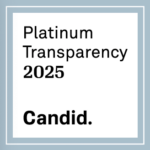Executive Summary
Applying the expedited pathway in the context of a preliminary benefit/risk assessment, rather than focusing solely on predictive surrogate or intermediate clinical endpoints, would give the US FDA more flexibility, Friends of Cancer Research working group says in a new white paper.
The US Food and Drug Administration’s accelerated approval program could be improved by reframing its focus on a drug’s benefit/risk profile rather than the effect on a surrogate endpoint.
Consideration also should be given to having sponsors resubmit for continued approval, rather than putting the onus on the FDA to take a drug off the market for failure to confirm clinical benefit.
These are some of the ideas laid out in a multi-stakeholder working group white paper, “Optimizing the Use of Accelerated Approval,” released by the Friends of Cancer Research and discussed at its annual meeting last year.
FDA Oncology Center of Excellence director Richard Pazdur said he asked FOCR to take a “fresh look” at the accelerated approval program to see how it could be revamped to give the agency greater flexibility.
The issue has increased in urgency as AMAG Pharmaceuticals Inc. is pushing to keep its preterm birth drug Makena (hydroxyprogesterone caproate) on the market even after FDA moved to pull the accelerated approval. (Also see “Keep Makena Under Accelerated Approval Pending More Studies, AMAG Tells US FDA” – Pink Sheet, 19 Jan, 2021.)
Oncology Center of Excellence director Richard Pazdur wanted a “fresh look” at the accelerated approval program to see how it could be revamped to give the agency greater flexibility.
The working group – comprising representatives from the agency, industry, academia and the patient community – said the accelerated approval pathway should evolve to keep up with advances in both drug development and the scientific understanding of disease.
“As more transformative treatments are developed that extend survival by years or even decades, the ability to quantify overall survival will become increasingly difficult or impossible within the context of a clinical trial,” the paper states.
Ambiguity In Use Of Surrogates
Under accelerated approval, a drug may come to market based on a demonstration of effect on a surrogate endpoint, or an intermediate clinical endpoint, that is reasonably likely to predict clinical benefit. Sponsors must conduct postmarketing studies designed to verify and describe the expected clinical benefit. The statute includes provisions for withdrawal of an accelerated approval drug when clinical trials fail to verify clinical benefit or safety concerns arise.
There is some discrepancy, particularly in oncology, regarding the clinical and regulatory context in which a surrogate endpoint is used to grant traditional approval, and when it is considered reasonably likely to predict clinical benefit in support of an accelerated approval, the working group said.
For example, objective response rate is considered a surrogate endpoint for accelerated approval in oncology, but it also can serve as the basis of regular approval in single-arm trials when the ORR is substantial and durable.
“The use of the same surrogate in different contexts necessitates greater clarity regarding the level of evidence necessary for and how various endpoints are considered across development programs when a drug can be granted traditional approval based upon an endpoint that is also used for AA.” – FOCR white paper
“The use of the same surrogate in different contexts necessitates greater clarity regarding the level of evidence necessary for and how various endpoints are considered across development programs when a drug can be granted traditional approval based upon an endpoint that is also used for AA,” the paper states.
Reframing Around A Benefit/Risk Construct
The white paper points to similarities and differences between the accelerated approval program and the European Medicines Agency’s conditional marketing authorization program.
The latter allows a drug for serious or life-threatening diseases to come to market before the availability of comprehensive clinical data if the benefit/risk balance is positive. Conditional authorization is valid for one year, after which a sponsor must apply for renewal.
Communication about an accelerated approval drug should be shifted away from a focus solely on predictive endpoints and toward a discussion about overall benefit/risk considerations, as is done in the context of an EU conditional marketing authorization, the working group said.
FDA Division of Hematologic Malignancies I acting director Angelo DeClaro said that while the review process already includes a benefit/risk assessment for all approval decisions, “we are still bound by the current legal framework, which requires accelerated approval to be based on a surrogate or intermediate clinical endpoint that’s reasonably likely to predict for benefit.”
This poses challenges when the same endpoint has been used for the basis of both accelerated approval and traditional approval, and in establishing that a surrogate is reasonably likely to predict clinical benefit, he said.
“I think reconsideration of the basis for accelerated approval could grant FDA more flexibility to have more therapies available for serious and life-threatening diseases,” said DeClaro, who is also OCE associate director of global clinical sciences.
More clarity as to how the FDA considers benefit/risk in an accelerated approval could be helpful regarding the magnitude of effect and potential toxicities of a drug, the white paper states.
“For example, when considering magnitude of effect, a substantial outcome in a surrogate endpoint may be a superior outcome vs. a less impactful outcome as measured in a traditional endpoint.”
In addition, potential toxicities should be considered within the context of importance to a patient’s quality of life and may contribute to a determination about the existence of “available” therapies. “It may be appropriate to award AA to a drug with a lower ORR if the drug is less toxic or has a positive impact on patient-reported outcomes or function – and a confirmatory trial would aim to verify that benefit vs. risk was maintained in the postmarket setting,” the paper states.
‘Shoehorning’ Lartruvo Into Accelerated Approval
Eli Lilly and Company’s Lartruvo (olaratumab) exemplifies the flexibility the agency would like to have under accelerated approval but which officials say currently is lacking.
The sarcoma drug has been cited as a textbook example of how the expedited regulatory pathway should work when a drug’s initial promise is not borne out in subsequent studies. (Also see “A Successful Failure? Lartruvo’s Speedy Withdrawal Sets New Bar For Accelerated Approval Drugs” – Pink Sheet, 25 Apr, 2019.)
Lartruvo came to market in 2016 on the basis of impressive overall survival results in a Phase II study, although progression-free survival was not significantly better relative to the comparator arm. When the results of the confirmatory trail failed to demonstrate a survival benefit, Lilly voluntarily withdrew the drug pursuant to an agreement made with the FDA before the accelerated approval, Pazdur said.
In citing the need for more flexibility with the accelerated approval program, Pazdur said Lartruvo did not fit the traditional paradigm for the expedited pathway.
The drug “did not fit into the regulations for accelerated approval,” he said. “We already had the improvement” in overall survival.
However, using the accelerated approval pathway was a way of modulating the risk that the drug’s survival benefit would not be confirmed in a much larger study. “That’s an example of where the regulations did not work and we shoehorned that approval into accelerated approval.”
Confirmatory Trials
Under an accelerated approval program based upon a benefit/risk construct, a postmarketing confirmatory trial should be aimed at verifying the totality of evidence of a drug’s benefits and risks, rather than focusing only on confirmation of a primary endpoint, the paper states.
To address challenges inherent in enrolling and completing confirmatory trials after an accelerated approval drug is on the market, such studies could be required to be initiated and have enrolled a predetermined number of patients by the time the marketing application is filed, the paper states. “This would require additional and earlier communication between FDA and sponsor to facilitate, including more real-time access for the FDA to the necessary data that would inform design of a confirmatory trial, including guidance to determine how a ‘minimum number of patients accrued’ would be defined across different drugs and disease settings.”
The FDA’s oncology and hematology review divisions generally have insisted that a confirmatory trial is underway, or at the least that its design be agreed upon, before accelerated approval is granted.
The working group also sees an opportunity for use of real-world evidence to support confirmation of benefit in the postmarketing setting. This would allow for a fuller characterization of benefits and risks in a broader population than the highly selected, homogenous patient population usually studied in premarketing clinical trials, the working group said.
Failure To Confirm Benefit
The FDA approaches a negative confirmatory trial, and the question of whether a drug should remain available under accelerated approval, on a case-by-case basis, DeClaro said.
“We recognize that there could be multiple factors that lead a confirmatory trial to fail,” DeClaro said. “One reason is the drug has no effect. But we also have to consider other factors, such as did they target the wrong population or was the dosing regimen not the correct one that was selected.”
The white paper suggests the accelerated approval pathway should be revised to make the process of withdrawing an accelerated approval drug easier.
“We recognize that there could be multiple factors that lead a confirmatory trial to fail. One reason is the drug has no effect. But we also have to consider other factors, such as did they target the wrong population or was the dosing regimen not the correct one that was selected.” – FDA’s Angelo DeClaro
The FDA’s current withdrawal process, which involves giving a sponsor an opportunity for a public hearing, is onerous, time consuming and not conducive to a fast removal if a company objects to the agency’s request. This was demonstrated by the FDA’s experience in trying to remove the metastatic breast cancer claim for Genentech, Inc.’s Avastin (bevacizumab), a process that took 11 months and extensive agency resources.
The Avastin experience spurred agency calls for an “easy off” mechanism when an accelerated approval drug fails to confirm clinical benefit. (Also see “Lessons From Avastin: Accelerated Approval Needs “Easy On, Easy Off” Mechanism, Pazdur Says” – Pink Sheet, 26 Nov, 2012.)
“The FDA should consider ways in which this pathway can be made more nimble and improve this mechanism as an enforcement mechanism for required confirmatory studies,” the paper states.
One idea suggested is the EMA approach requiring sponsors to request renewal of their conditional marketing status every year.
“At the present time the onus is all on the FDA to take the action” to initiate a withdrawal, said Pazdur, who was not a member of the working group that wrote the white paper. “The way the European regulations are written and the way others have conceived this is the drug manufacturer reapplies” for permission to continue marketing the drug.
Pazdur said that an accelerated approval drug’s benefit/risk profile may change while it is on the market or available therapies may change, raising the question “does it make sense even to have that drug out there after other therapies have come out on the market?”
https://pink.pharmaintelligence.informa.com/PS143353/Accelerated-Approv…

